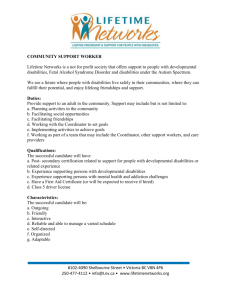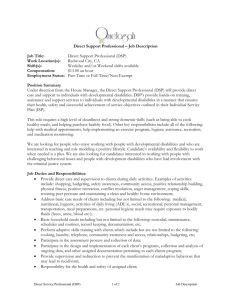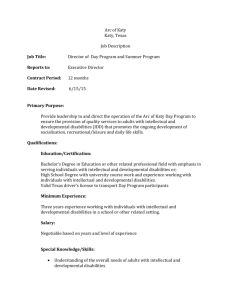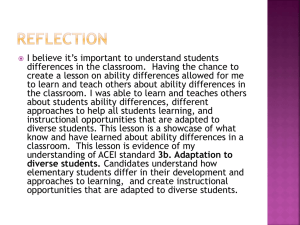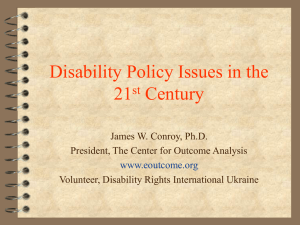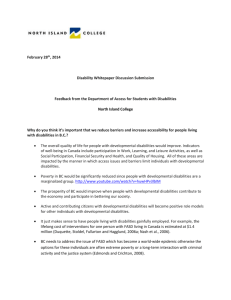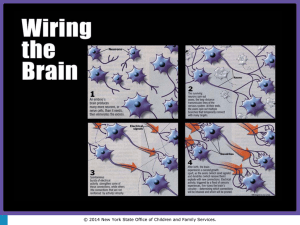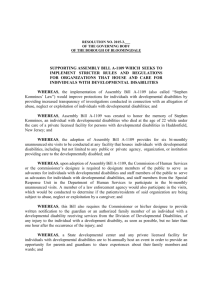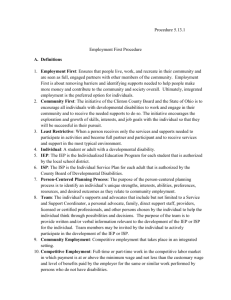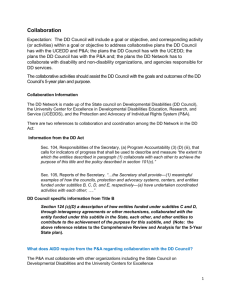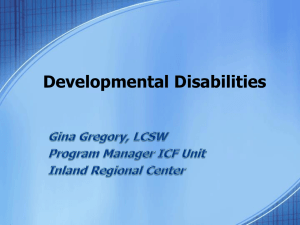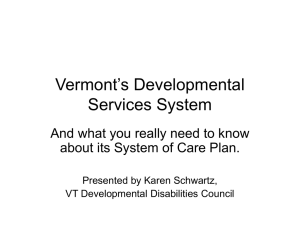Jamie Kendall, ADD-ACF
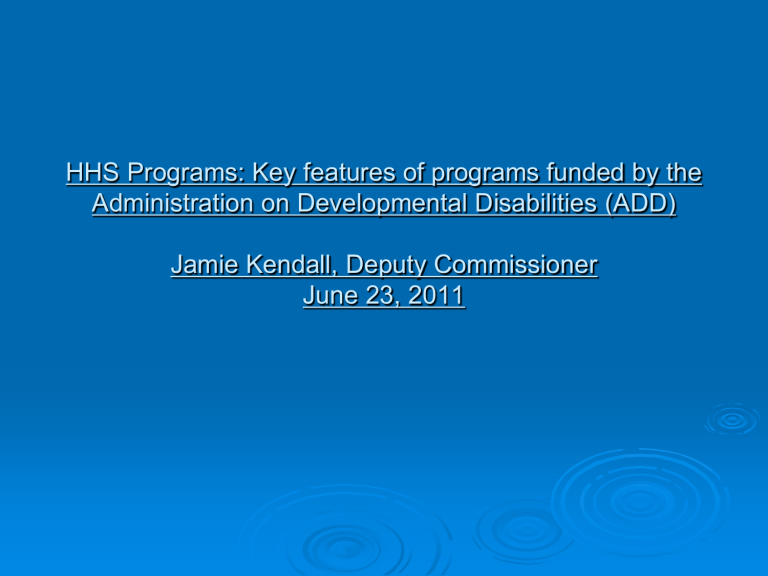
HHS Programs: Key features of programs funded by the
Administration on Developmental Disabilities (ADD)
Jamie Kendall, Deputy Commissioner
June 23, 2011
Myth: The Administration on Developmental
Disabilities (ADD) is a large program office
Reality: ADD is a small program office with an oversized statutory mission, “ to assure that individuals with developmental disabilities and their families participate in the design of and have access to needed culturally-competent community services, individualized supports, and other forms of assistance that promote selfdetermination, independence, productivity, and integration and inclusion in all facets of community life ”
Myth: ADD has a substantial discretionary budget to support the efforts of the DD
Network.
Reality: There are estimated to be approximately 5 million Americans with intellectual/developmental disabilities
(consistent with the DD Act definition), and many of the efforts of our programs are cross-disability, serving many people with other disabilities as well, yet the agency budget for FY11 is about $186M.
Funding Amounts
State Councils on Developmental Disabilities $ 74,915,868
Protection and Advocacy $ 40,941,952
Projects of National Significance $ 14,133,676
University Centers on Excellence in Disabilities $ 38,865,114
Help America Vote Act $ 17,375,180
Total $ 186,231,690
Myth: The Developmental Disabilities Act,
Federal legislation, focuses on the federal level
Reality: Although Federal legislation, our programs see the real action at the State level
Myth: ADD focuses upon providing direct service to people with DD.
Reality: ADD is responsible for four programs under the DD Act (DDC, UCEDD, P&A, PNS) and HAVA that are primarily focused upon systems change and capacity development, with some elements of direct service in all of the programs.
Myth: ADD oversees State DD agencies across the country.
Reality: The State DD Agencies work as partners (and sometimes adversaries!) with the ADD entities in each state, but they are state units that generally operate as a component of the State Medicaid
Agency or as a State office with delegated authority through the State Medicaid agency to implement DD services.
Myth: ADD, because we are located at
HHS within the Administration for Children and Families, we primarily serve children
Reality: ADD serves adults and children. We serve individuals and their families across the lifespan
Myth: Collaboration is new to our programs
Reality: DD Act programs are the embodiment of interoperability

